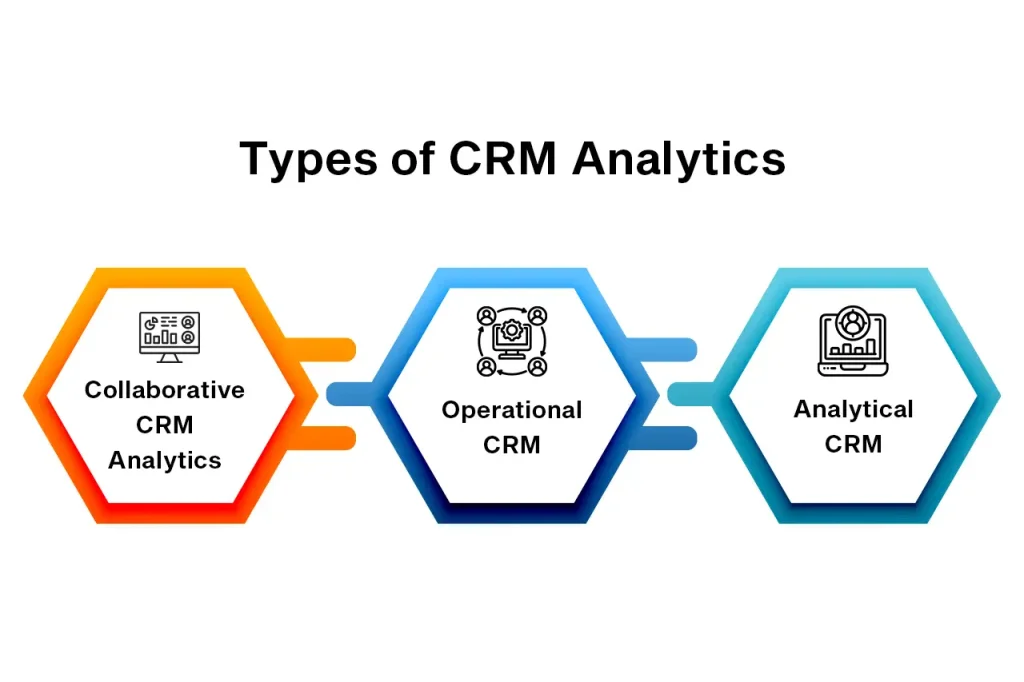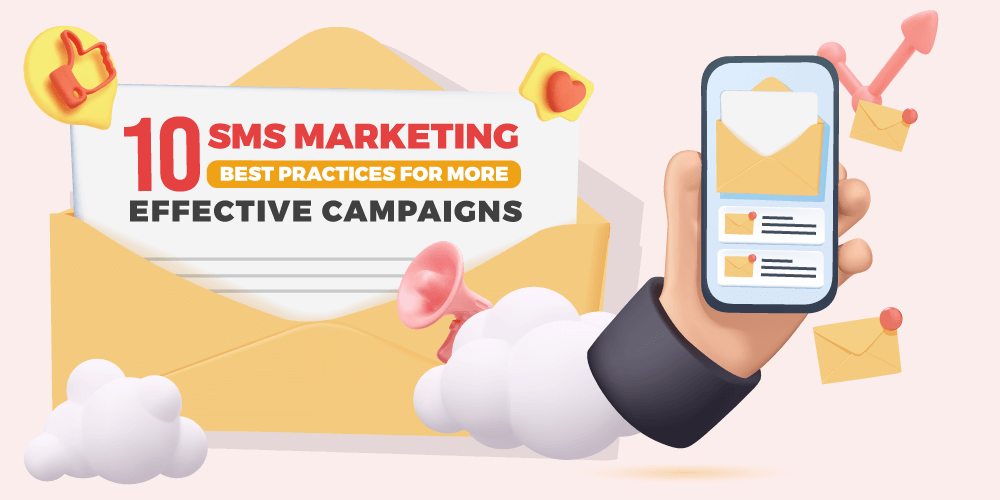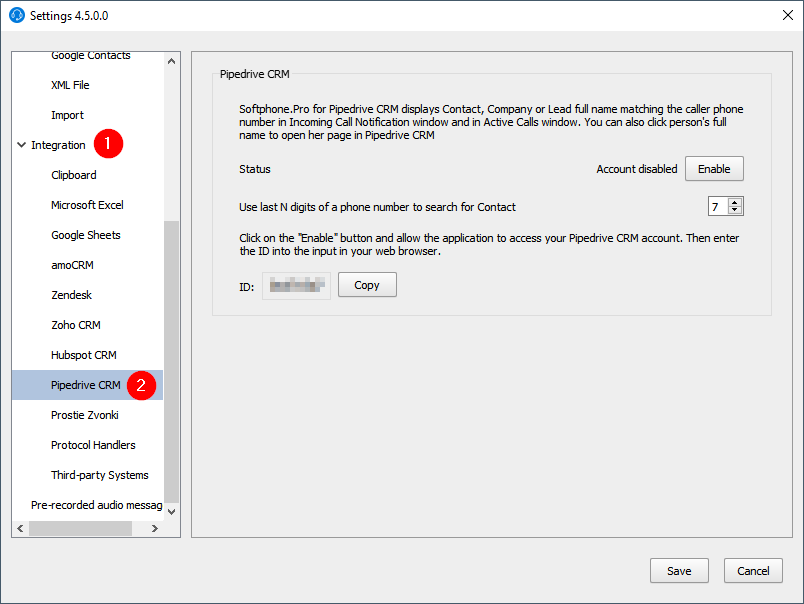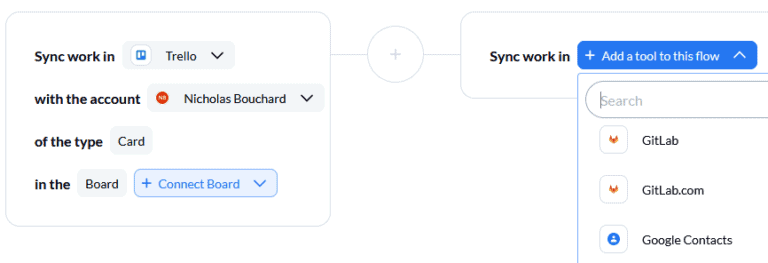
Introduction: The Power of Data in Modern Marketing
In today’s hyper-competitive business landscape, simply having a great product or service isn’t enough. To truly thrive, businesses need to understand their customers deeply, anticipate their needs, and tailor their marketing efforts accordingly. This is where CRM marketing analytics comes into play. It’s the secret weapon for businesses looking to not just survive but to dominate their markets.
CRM, or Customer Relationship Management, systems are no longer just about storing contact information. They’ve evolved into powerful platforms that capture a wealth of data about customer interactions, preferences, and behaviors. When combined with robust analytics, this data becomes a goldmine, offering actionable insights that can transform marketing strategies and drive significant revenue growth. This comprehensive guide delves deep into the world of CRM marketing analytics, exploring its benefits, key metrics, implementation strategies, and best practices. Get ready to unlock the power of data and revolutionize your marketing approach.
What is CRM Marketing Analytics? Defining the Core Concepts
At its heart, CRM marketing analytics is the process of collecting, analyzing, and interpreting data within a CRM system to understand customer behavior, optimize marketing campaigns, and improve overall business performance. It’s about turning raw data into actionable insights that inform strategic decision-making.
Think of it as a detective investigating a complex case. The CRM system provides the clues – customer interactions, purchase history, website activity, social media engagement, and more. The analytics tools are the magnifying glass, helping you examine these clues, identify patterns, and draw meaningful conclusions. These conclusions then guide your marketing actions, helping you target the right customers with the right messages at the right time.
Here’s a breakdown of the core components:
- CRM System: The central repository for customer data, including contact information, interactions, and purchase history.
- Data Collection: Gathering data from various sources, such as website analytics, email marketing platforms, social media channels, and customer service interactions.
- Data Analysis: Using analytical tools and techniques to identify trends, patterns, and insights within the data. This includes segmentation, cohort analysis, and predictive modeling.
- Reporting and Visualization: Presenting the findings in a clear and concise manner, using dashboards, charts, and graphs to communicate key insights to stakeholders.
- Actionable Insights: Utilizing the analysis to refine marketing strategies, personalize customer experiences, and improve overall business performance.
CRM marketing analytics is not just about crunching numbers; it’s about understanding the ‘why’ behind customer behavior. Why are some customers more likely to convert than others? Why do some campaigns perform better than others? By answering these questions, businesses can make data-driven decisions that lead to greater efficiency and effectiveness.
The Benefits of CRM Marketing Analytics: Why It Matters
The advantages of incorporating CRM marketing analytics into your business strategy are numerous and far-reaching. Here are some of the key benefits:
Enhanced Customer Understanding
CRM analytics provides a 360-degree view of your customers, allowing you to understand their preferences, behaviors, and needs. This deeper understanding enables you to:
- Create detailed customer profiles: Segment your audience based on demographics, purchase history, engagement levels, and other relevant criteria.
- Personalize marketing messages: Tailor your communications to resonate with individual customer segments, increasing engagement and conversion rates.
- Improve customer service: Anticipate customer needs and proactively address potential issues, leading to greater customer satisfaction and loyalty.
Improved Marketing ROI
By analyzing marketing campaign performance, you can identify what’s working and what’s not, optimizing your spending and maximizing your return on investment (ROI). This includes:
- Tracking campaign performance: Monitor key metrics such as click-through rates, conversion rates, and revenue generated.
- Identifying high-performing channels: Allocate your budget to the channels that deliver the best results.
- Optimizing campaigns in real-time: Make adjustments to your campaigns based on performance data, ensuring you’re always striving for the best outcomes.
Increased Sales and Revenue
CRM analytics can help you identify and nurture leads, close deals faster, and increase overall sales revenue. This is achieved through:
- Lead scoring: Prioritize leads based on their likelihood to convert, allowing your sales team to focus on the most promising prospects.
- Sales forecasting: Predict future sales based on historical data, allowing you to plan your resources and set realistic goals.
- Upselling and cross-selling opportunities: Identify opportunities to offer additional products or services to existing customers, increasing their lifetime value.
Improved Customer Retention
By understanding customer behavior and identifying at-risk customers, you can proactively address their concerns and improve retention rates. This includes:
- Identifying at-risk customers: Recognize customers who are showing signs of churn, such as decreased engagement or inactivity.
- Proactive intervention: Reach out to at-risk customers with personalized offers or support, addressing their concerns and encouraging them to stay.
- Building customer loyalty: Create a positive customer experience that fosters loyalty and encourages repeat business.
Data-Driven Decision Making
CRM analytics empowers you to make informed decisions based on data rather than gut feelings. This leads to:
- Reduced guesswork: Eliminate uncertainty and make decisions based on evidence.
- Increased efficiency: Optimize your marketing efforts and allocate resources more effectively.
- Greater agility: Respond quickly to changing market conditions and customer needs.
In short, CRM marketing analytics is a crucial investment for any business that wants to thrive in today’s competitive market. It enables you to understand your customers better, optimize your marketing efforts, and ultimately drive revenue growth.
Key Metrics and KPIs for CRM Marketing Analytics
To effectively leverage CRM marketing analytics, it’s essential to track the right metrics and key performance indicators (KPIs). These metrics provide valuable insights into your marketing performance and help you measure your progress towards your goals.
Here are some of the most important metrics to consider:
Customer Acquisition Metrics
- Cost Per Acquisition (CPA): The average cost of acquiring a new customer. This is calculated by dividing the total marketing spend by the number of new customers acquired.
- Customer Acquisition Cost (CAC): Similar to CPA, but often includes additional costs such as sales team salaries and overhead.
- Conversion Rate: The percentage of leads that convert into customers. This can be tracked at different stages of the sales funnel.
- Lead Generation Rate: The rate at which you generate new leads.
- Website Traffic: The number of visitors to your website, which is a good indicator of your marketing reach.
Customer Engagement Metrics
- Click-Through Rate (CTR): The percentage of people who click on a link in your email or ad.
- Open Rate: The percentage of people who open your emails.
- Bounce Rate: The percentage of people who leave your website after viewing only one page.
- Time on Site: The average amount of time visitors spend on your website, which indicates engagement.
- Social Media Engagement: The number of likes, shares, comments, and followers on your social media platforms.
Sales Performance Metrics
- Sales Revenue: The total revenue generated from sales.
- Average Order Value (AOV): The average amount spent per order.
- Customer Lifetime Value (CLTV): The predicted revenue a customer will generate over their relationship with your business.
- Sales Cycle Length: The average time it takes to close a sale.
- Win Rate: The percentage of leads that convert into paying customers.
Customer Retention Metrics
- Customer Churn Rate: The percentage of customers who stop doing business with you over a specific period.
- Customer Retention Rate: The percentage of customers who remain customers over a specific period.
- Net Promoter Score (NPS): A measure of customer loyalty, based on how likely customers are to recommend your business to others.
- Customer Satisfaction (CSAT): A measure of how satisfied customers are with your products or services.
- Repeat Purchase Rate: The percentage of customers who make repeat purchases.
By consistently tracking these metrics, you can gain a clear understanding of your marketing performance, identify areas for improvement, and make data-driven decisions to optimize your results. Remember to tailor your metrics to your specific business goals and industry.
Implementing CRM Marketing Analytics: A Step-by-Step Guide
Implementing CRM marketing analytics can seem daunting, but breaking it down into manageable steps makes the process much more accessible. Here’s a step-by-step guide to help you get started:
Step 1: Define Your Goals and Objectives
Before you start collecting and analyzing data, it’s crucial to define your goals and objectives. What do you want to achieve with CRM marketing analytics? Are you looking to increase sales, improve customer retention, or optimize marketing campaign performance? Having clear goals will guide your data collection and analysis efforts.
Ask yourself questions like:
- What are our key performance indicators (KPIs)?
- What are our overall business objectives?
- What specific marketing challenges are we trying to solve?
Defining your goals upfront will ensure that your analytics efforts are focused and aligned with your business strategy.
Step 2: Choose the Right CRM System and Analytics Tools
Selecting the right CRM system and analytics tools is essential for successful implementation. Consider your business needs, budget, and technical capabilities when making your choices.
CRM System:
Look for a CRM system that offers robust data collection capabilities, integration with other marketing tools, and a user-friendly interface. Popular options include Salesforce, HubSpot, Zoho CRM, and Microsoft Dynamics 365. Ensure the system can track and store the necessary customer data.
Analytics Tools:
Depending on your needs, you can choose from a variety of analytics tools. Some CRM systems offer built-in analytics features, while others integrate with third-party tools. Consider tools like Google Analytics, Tableau, Power BI, and Adobe Analytics. These tools can help you visualize your data and gain actionable insights.
Step 3: Integrate Your Data Sources
To get a complete picture of your customer data, you need to integrate data from various sources, including your website, email marketing platform, social media channels, and customer service interactions.
This typically involves:
- Connecting your CRM system to your website analytics: Track website activity, such as page views, time on site, and conversion rates.
- Integrating your email marketing platform: Track email open rates, click-through rates, and conversion rates.
- Connecting your social media channels: Monitor social media engagement, such as likes, shares, and comments.
- Importing data from other sources: Import data from other systems, such as your accounting software or point-of-sale system.
Ensure that your data is properly formatted and consistent across all sources.
Step 4: Clean and Organize Your Data
Data quality is crucial for accurate analysis. Before you start analyzing your data, you need to clean and organize it. This involves:
- Removing duplicate records: Eliminate redundant data entries.
- Correcting errors: Fix any inaccuracies in your data.
- Standardizing data formats: Ensure that all data is in a consistent format.
- Segmenting your data: Group your customers into meaningful segments based on demographics, behavior, or purchase history.
The cleaner your data, the more reliable your insights will be.
Step 5: Analyze Your Data and Generate Reports
Once your data is clean and organized, you can start analyzing it. Use your analytics tools to:
- Identify trends and patterns: Look for insights into customer behavior, campaign performance, and sales trends.
- Segment your audience: Group your customers into segments based on their characteristics and behaviors.
- Create dashboards and reports: Visualize your data and communicate key insights to stakeholders.
- Conduct cohort analysis: Track the behavior of groups of customers over time.
Generate reports that highlight your key metrics and KPIs.
Step 6: Act on Your Insights
The most important step is to take action based on your insights. Use your findings to:
- Optimize your marketing campaigns: Improve your targeting, messaging, and channels.
- Personalize customer experiences: Tailor your communications to individual customer preferences.
- Improve customer service: Proactively address customer issues and improve satisfaction.
- Refine your sales process: Improve your lead scoring, sales forecasting, and closing rates.
Continuously monitor your results and make adjustments as needed.
Step 7: Continuously Monitor and Refine
CRM marketing analytics is an ongoing process. Continuously monitor your results, track your KPIs, and make adjustments to your strategies as needed. Regularly review your data, identify new trends, and refine your approach to ensure you’re always optimizing your marketing efforts.
Set up regular reporting cycles and review your progress with your team. This will help you stay on track and ensure that you’re achieving your goals.
Best Practices for CRM Marketing Analytics: Maximizing Your Results
To get the most out of your CRM marketing analytics efforts, it’s important to follow some best practices. These tips will help you optimize your data collection, analysis, and implementation strategies.
1. Focus on Data Quality
Data quality is paramount. Inaccurate or incomplete data can lead to flawed insights and wasted resources. Invest time and effort in ensuring your data is clean, accurate, and up-to-date.
- Implement data validation rules: Prevent errors from entering your system.
- Regularly audit your data: Identify and correct any inaccuracies.
- Train your team on data entry best practices: Ensure consistent data collection across your organization.
2. Define Clear KPIs and Goals
Before you start any analysis, clearly define your KPIs and goals. This will help you focus your efforts and measure your progress. Ensure your KPIs are SMART: Specific, Measurable, Achievable, Relevant, and Time-bound.
3. Segment Your Audience Strategically
Don’t treat all customers the same. Segment your audience based on demographics, behavior, purchase history, and other relevant criteria. This will allow you to personalize your marketing messages and target specific customer segments with tailored offers.
4. Automate Your Reporting
Manually generating reports can be time-consuming and inefficient. Automate your reporting process to save time and ensure that you’re always up-to-date on your marketing performance.
- Use dashboards: Visualize your key metrics in real-time.
- Set up automated email reports: Receive regular updates on your performance.
- Integrate your reporting with your CRM system: Streamline your reporting process.
5. Continuously Test and Optimize
Marketing is an iterative process. Continuously test different strategies, messages, and channels to see what works best. Use A/B testing to compare different versions of your marketing materials and optimize your campaigns based on the results.
6. Integrate with Other Marketing Tools
Integrate your CRM system with other marketing tools, such as your email marketing platform, social media management tools, and website analytics platform. This will provide a more comprehensive view of your customer data and enable you to streamline your marketing efforts.
7. Invest in Training and Education
CRM marketing analytics can be complex. Invest in training and education to ensure that your team has the skills and knowledge they need to effectively use your tools and analyze your data. Consider:
- Providing training on your CRM system and analytics tools: Ensure your team knows how to use the tools effectively.
- Offering training on data analysis techniques: Help your team interpret data and generate actionable insights.
- Encouraging continuous learning: Stay up-to-date on the latest trends and best practices in CRM marketing analytics.
8. Foster Collaboration
CRM marketing analytics is not just a marketing function. Foster collaboration between your marketing, sales, customer service, and IT teams. This will ensure that everyone is aligned on your goals and that you’re using data to drive business performance across all departments.
9. Prioritize Privacy and Compliance
Always prioritize data privacy and compliance. Ensure that you’re following all relevant regulations, such as GDPR and CCPA. Be transparent with your customers about how you’re collecting and using their data, and provide them with the ability to control their data.
10. Stay Flexible and Adaptable
The marketing landscape is constantly evolving. Stay flexible and adaptable, and be willing to adjust your strategies based on new data and insights. Continuously monitor your results and make adjustments as needed to stay ahead of the competition.
CRM Marketing Analytics: Case Studies and Real-World Examples
To understand the power of CRM marketing analytics, let’s look at some real-world examples of how businesses have used it to achieve impressive results.
Example 1: Improving Customer Retention in the Telecom Industry
A leading telecommunications company was struggling with high customer churn. By analyzing their CRM data, they identified that customers who had a negative experience with customer service were more likely to churn. They implemented the following strategies:
- Improved Customer Service Training: Provided additional training to customer service representatives to improve their communication and problem-solving skills.
- Proactive Outreach: Identified at-risk customers and proactively reached out to them with personalized offers and support.
- Personalized Communication: Tailored their communications to individual customer preferences and needs.
Result: The company saw a 15% reduction in customer churn and a significant increase in customer lifetime value.
Example 2: Driving Sales Growth in the E-commerce Sector
An e-commerce retailer wanted to increase sales and average order value. By analyzing their CRM data, they discovered that customers who purchased specific products were more likely to buy related items. They implemented the following strategies:
- Personalized Product Recommendations: Implemented personalized product recommendations on their website and in their email marketing campaigns.
- Targeted Email Marketing: Sent targeted emails to customers based on their purchase history, recommending related products.
- Upselling and Cross-selling: Incorporated upselling and cross-selling strategies into their sales process.
Result: The company experienced a 20% increase in sales revenue and a 10% increase in average order value.
Example 3: Optimizing Marketing Campaign Performance in the Software Industry
A software company wanted to improve the performance of their marketing campaigns. By analyzing their CRM data, they discovered that certain marketing channels were more effective than others. They implemented the following strategies:
- Channel Optimization: Reallocated their marketing budget to the channels that were generating the best results.
- A/B Testing: Conducted A/B testing to optimize their email subject lines, ad copy, and landing pages.
- Lead Scoring: Implemented lead scoring to prioritize leads based on their likelihood to convert.
Result: The company saw a 30% increase in conversion rates and a significant reduction in their cost per acquisition.
These case studies demonstrate the power of CRM marketing analytics to drive real business results. By understanding your customers, optimizing your marketing efforts, and making data-driven decisions, you can achieve significant improvements in sales, revenue, and customer loyalty.
The Future of CRM Marketing Analytics: Trends to Watch
The field of CRM marketing analytics is constantly evolving, with new technologies and trends emerging all the time. Staying ahead of these trends is crucial to maintaining a competitive edge. Here are some key trends to watch:
1. Artificial Intelligence (AI) and Machine Learning (ML)
AI and ML are transforming the way businesses analyze data and make decisions. These technologies can automate data analysis, identify patterns, and predict customer behavior with greater accuracy. This includes:
- Predictive Analytics: Using machine learning to predict customer churn, identify at-risk customers, and forecast sales.
- Personalized Recommendations: Using AI to provide personalized product recommendations and tailor marketing messages.
- Automated Customer Service: Using chatbots and virtual assistants to provide instant customer support.
Businesses that embrace AI and ML will be able to gain a significant competitive advantage.
2. Enhanced Personalization
Customers expect personalized experiences. CRM marketing analytics enables businesses to tailor their communications and offers to individual customer preferences. This includes:
- Hyper-personalization: Delivering highly personalized content and offers based on individual customer data.
- Dynamic Content: Using dynamic content to personalize website content and email messages.
- Real-time Personalization: Personalizing customer experiences in real-time based on their current behavior.
Personalization will become even more sophisticated in the future, driven by AI and ML.
3. Data Privacy and Compliance
Data privacy and compliance are becoming increasingly important. Businesses need to be transparent with their customers about how they’re collecting and using their data, and they need to comply with all relevant regulations. This includes:
- GDPR and CCPA Compliance: Ensuring compliance with data privacy regulations.
- Data Security: Protecting customer data from cyber threats.
- Transparency and Consent: Being transparent with customers about data collection and obtaining their consent.
Data privacy will continue to be a top priority for businesses.
4. Integration of Data Sources
Businesses are collecting data from a growing number of sources. The ability to integrate data from these sources is crucial for gaining a complete view of the customer. This includes:
- Omnichannel Data Integration: Integrating data from all customer touchpoints, including website, email, social media, and customer service.
- Data Warehousing: Using data warehouses to store and manage large volumes of data.
- Data Lakes: Leveraging data lakes to store unstructured data.
Data integration will become even more sophisticated in the future, enabling businesses to gain deeper insights into customer behavior.
5. The Rise of Customer Data Platforms (CDPs)
Customer Data Platforms (CDPs) are becoming increasingly popular. CDPs centralize customer data from various sources, providing a unified view of the customer. This includes:
- Data Unification: Unifying customer data from multiple sources.
- Customer Segmentation: Segmenting customers based on their characteristics and behaviors.
- Personalization and Targeting: Using data to personalize customer experiences and target specific customer segments.
CDPs will play an increasingly important role in CRM marketing analytics.
By staying informed about these trends, businesses can ensure that they’re prepared for the future of CRM marketing analytics and can continue to drive growth and success.
Conclusion: Embracing the Data-Driven Future of Marketing
CRM marketing analytics is no longer a luxury; it’s a necessity. In today’s data-driven world, businesses that embrace analytics will be the ones that thrive. By understanding your customers, optimizing your marketing efforts, and making data-driven decisions, you can unlock significant growth and achieve a competitive advantage.
This guide has provided you with a comprehensive overview of CRM marketing analytics, including its benefits, key metrics, implementation strategies, and best practices. Now it’s time to put this knowledge into action. Start by defining your goals, choosing the right tools, and collecting and analyzing your data. Continuously monitor your results, make adjustments as needed, and stay up-to-date on the latest trends. The future of marketing is data-driven, and the sooner you embrace CRM marketing analytics, the sooner you’ll see the rewards.
Don’t be afraid to experiment, learn from your mistakes, and continuously refine your approach. The journey to data-driven marketing is an ongoing one, but the rewards are well worth the effort. Embrace the power of data and unlock the full potential of your marketing efforts. The future is here, and it’s powered by CRM marketing analytics.


